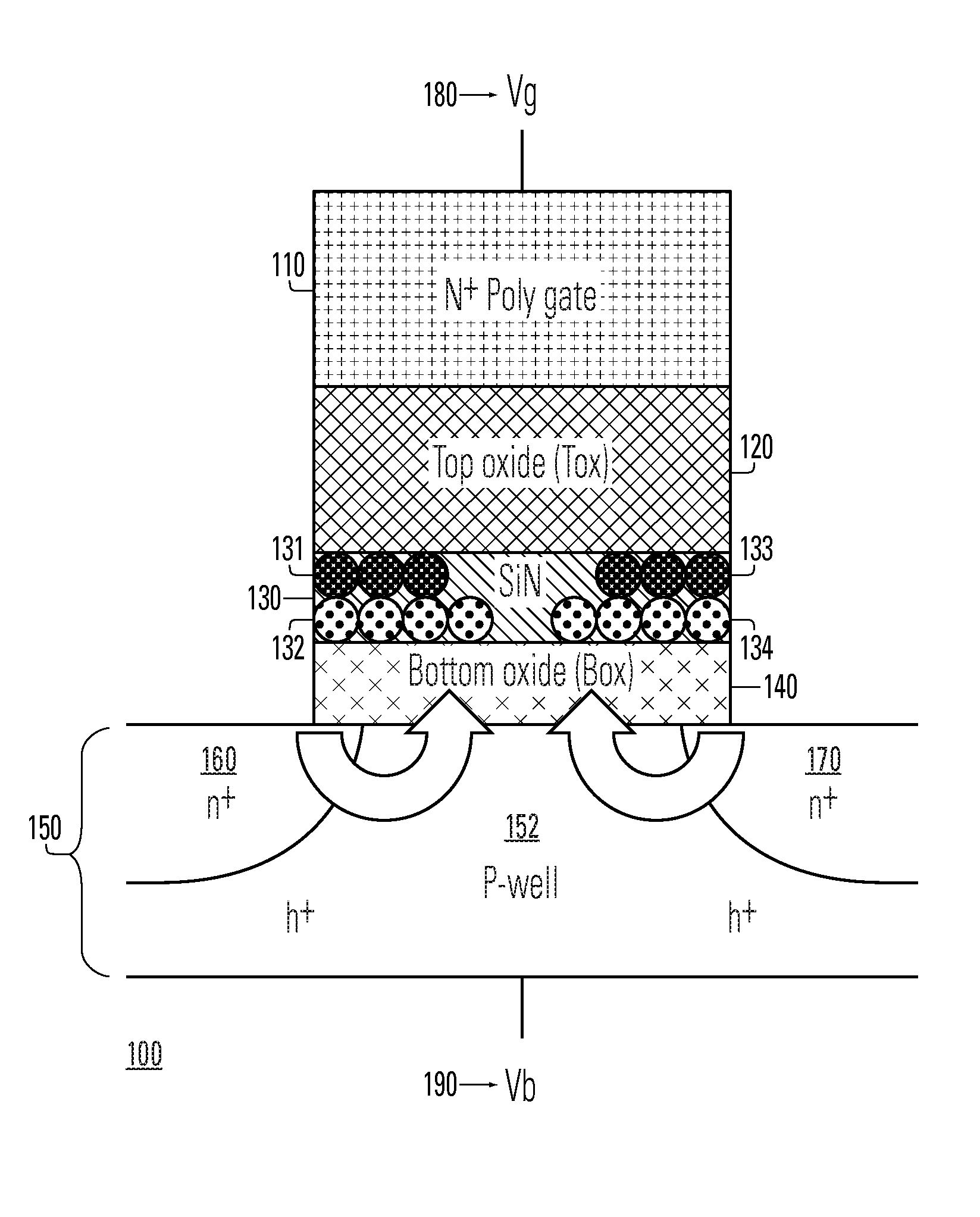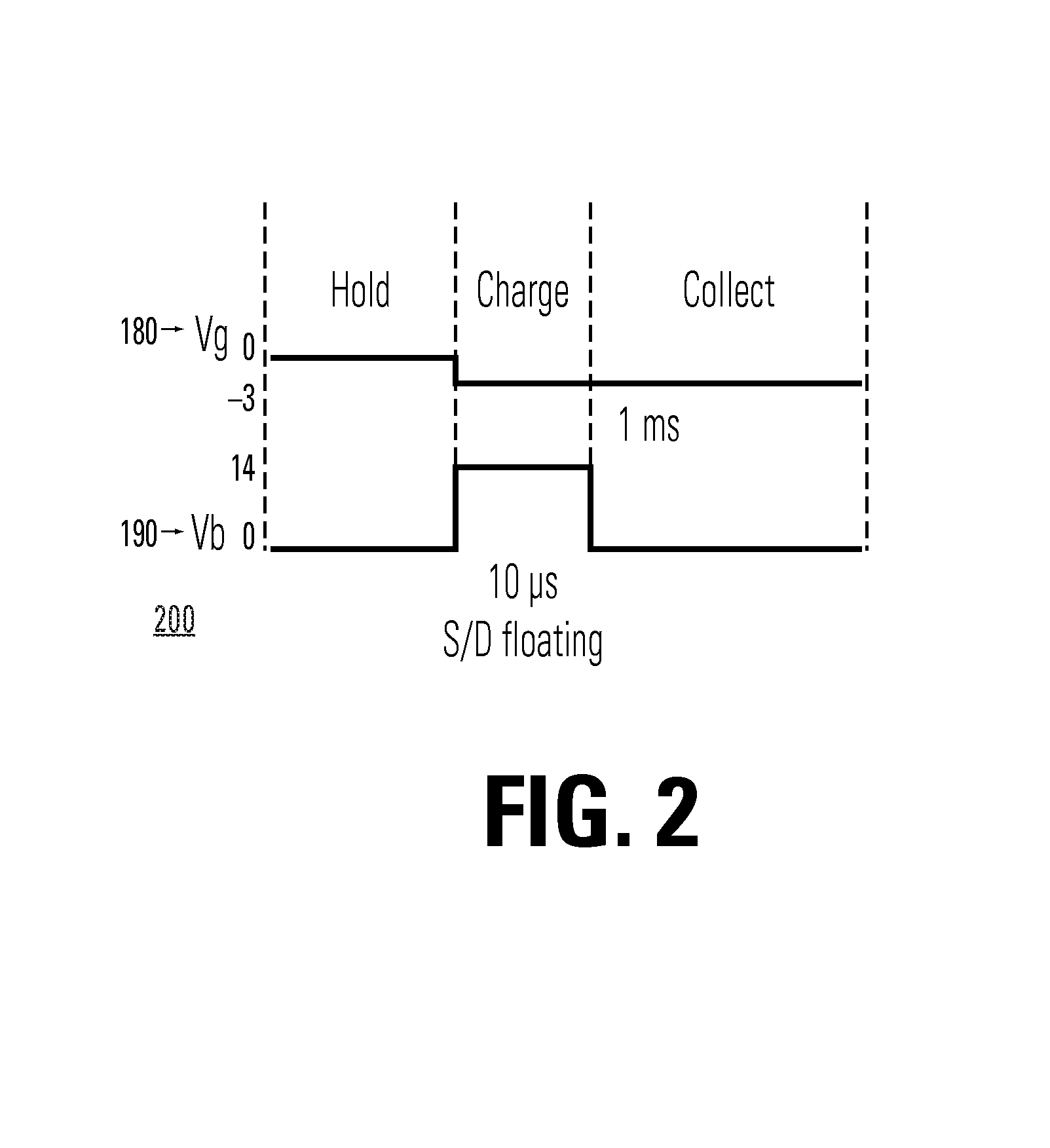Methods to resolve hard-to-erase condition in charge trapping non-volatile memory
a non-volatile memory and hard-to-erase technology, applied in static storage, digital storage, instruments, etc., can solve the problems of large vt distribution of erase state, hard-to-erase, charge loss in high threshold cell, etc., to eliminate or reduce the number of electrons, eliminate or reduce the hard-to-erase condition
- Summary
- Abstract
- Description
- Claims
- Application Information
AI Technical Summary
Benefits of technology
Problems solved by technology
Method used
Image
Examples
Embodiment Construction
[0025]Referring now to FIG. 1, there is shown a simplified structural diagram illustrating a charge trapping memory 100 for carrying out a reset operation using a substrate transient hot hole reset (STHH) operation. The charge trapping memory cell 100 has a substrate 150 with n+ doped regions 160 and 170, and a p-doped region 152 between the n+ doped regions 160 and 170. A bottom dielectric structure 140 (bottom oxide) overlays the substrate 150, a charge trapping structure 130 (e.g. silicon nitride layer) overlays the bottom dielectric structure 140, and a top dielectric structure (top oxide) 120 overlays the charge trapping structure 130, and a N+ poly gate 110 overlays the top dielectric structure 120. A gate voltage 180, Vg, is applied to the n+ poly gate 110, and a body voltage 190, Vb, is applied to the P-well substrate 150. Representative top dielectrics include silicon dioxide and silicon oxynitride having a thickness of about 5 to 10 nanometers, or other similar high dielec...
PUM
 Login to View More
Login to View More Abstract
Description
Claims
Application Information
 Login to View More
Login to View More - R&D
- Intellectual Property
- Life Sciences
- Materials
- Tech Scout
- Unparalleled Data Quality
- Higher Quality Content
- 60% Fewer Hallucinations
Browse by: Latest US Patents, China's latest patents, Technical Efficacy Thesaurus, Application Domain, Technology Topic, Popular Technical Reports.
© 2025 PatSnap. All rights reserved.Legal|Privacy policy|Modern Slavery Act Transparency Statement|Sitemap|About US| Contact US: help@patsnap.com



